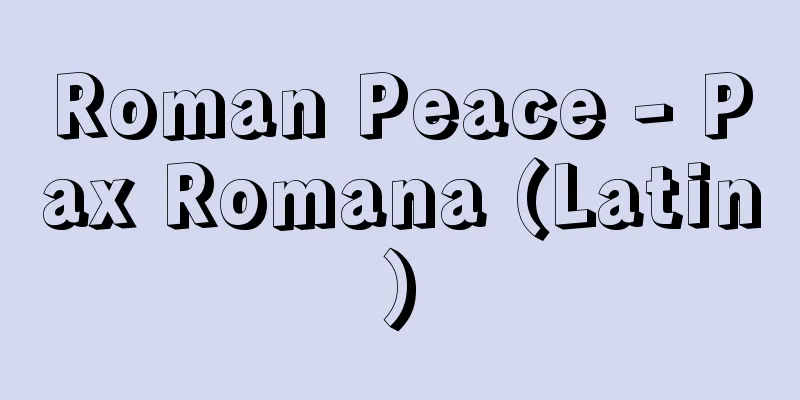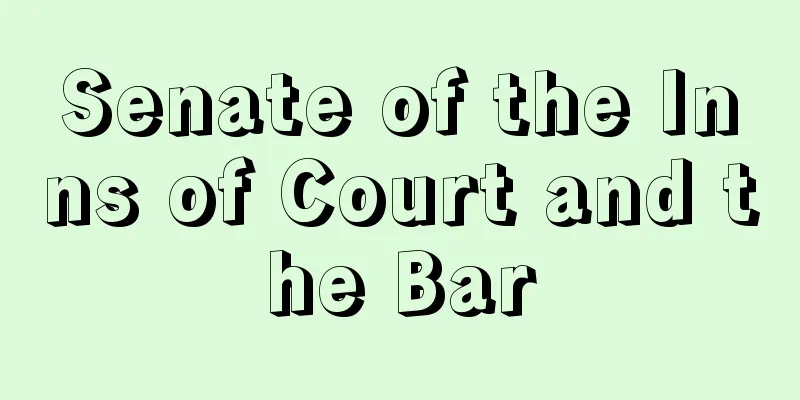Kunikyo - Kunikyo

|
The capital of the Nara period. Located in Kuni-go, Soraku County, Yamashiro Province (Reihei, Kamo Town, Kizugawa City, Kyoto Prefecture), it is also called Yamato Kuni-no-Omiya. When the rebellion of Fujiwara Hirotsugu broke out in 740 (Tenpyo 12), Emperor Shomu suddenly set out on an expedition to the eastern provinces, and even after the rebellion was put down, he did not return to Heijō, but instead began construction of Kuni-kyo, moved the capital, and rebuilt the Daigokuden and corridors of Heijō Palace. The initiator of this plan is believed to have been Tachibana Moroe, the Minister of the Right. After Shigaraki Palace was built in Koga County, Omi Province, construction of Kuni was halted in 743, but the following year he planned to move the capital to Naniwa, and although he moved the inner seal and station bell of Kuni Palace and made it the imperial capital, the emperor traveled from Naniwa to Shigaraki, and in 745 returned the capital to Heijō once again. The following year, the Daigokuden of Kuni Palace was donated to Yamashiro Kokubunji Temple. The left and right capitals were set apart based on the west road of Mt. Kazeyama, and the palace seems to have been located at the northern central tip of the left capital. Excavations conducted after 1976 confirmed the foundations of the Daigokuden. [Mitsuru Yagi] "Ancient Japanese Capitals" by Mitsuru Yagi (Kodansha Gendai Shinsho) [Reference] |Remains of the tower. Nationally designated historic site. Kizugawa City, Kyoto Prefecture . © Kizugawa City Board of Education . Yamashiro Kokubunji Temple ruins (Kunikyo ruins) Source: Shogakukan Encyclopedia Nipponica About Encyclopedia Nipponica Information | Legend |
|
奈良時代の都京。山城(やましろ)国相楽(そうらく)郡恭仁郷(京都府木津川(きづがわ)市加茂町例幣(かもちょうれいへい))にあり、大養徳(やまと)恭仁大宮ともよぶ。740年(天平12)藤原広嗣(ひろつぐ)の乱が起こると、聖武(しょうむ)天皇は突如東国へ出幸し、乱鎮定後も平城(へいじょう)に帰らず、恭仁京の造営を始め遷都、平城宮の大極殿(だいごくでん)、回廊を移建した。発議者は右大臣橘諸兄(たちばなのもろえ)とみられる。近江(おうみ)国甲賀郡に紫香楽宮(しがらきのみや)をつくると、743年恭仁造作を停止したが、翌年難波(なにわ)遷都を企て、恭仁宮の内印、駅鈴を移して皇都としたものの、天皇は難波から紫香楽へ幸し、745年ふたたび平城へ還都した。翌年恭仁宮の大極殿は山背国分寺(やましろこくぶんじ)に施入となった。鹿背山(かぜやま)の西道を基準に左京と右京が離れて設定され、宮は左京の中央北端に位置するらしい。1976年(昭和51)以後の発掘調査で大極殿基壇が確認された。 [八木 充] 『八木充著『古代日本の都』(講談社現代新書)』 [参照項目] |塔跡。国指定史跡 京都府木津川市©木津川市教育委員会"> 山城国分寺跡(恭仁京跡) 出典 小学館 日本大百科全書(ニッポニカ)日本大百科全書(ニッポニカ)について 情報 | 凡例 |
<<: Kunisaki [town] - Kunisaki
>>: Kunikida Doppo - Kunikida Doppo
Recommend
National Advisory Committee for Aeronautics
...One of the US government agencies responsible ...
Extra rice - Kachoumai
Additional rice was collected from public lands a...
Akasaki Shrine
…Shomiyoichi in Fukagawa flourished as a market t...
"Osaka Jiji Shimpo" - Osaka Jiji Shimpo
…In 1893, it signed a special agreement with Reut...
Thiocyanic acid (English spelling)
It is a sulfur-substituted derivative of cyanic a...
Culocedrus decurrens (English spelling) Culocedrus decurrens
… [Makoto Nishida]. … *Some of the terminology th...
Soricinae
…A general term for mammals belonging to the Sori...
Racin, K. (English spelling) RacinK
...In pre-war Belgrade, poets such as Crnjanski a...
Prøysen, A.
… [Other European countries] In the Netherlands, ...
Labor market - labor market English
The labor market is a place where transactions ta...
Fragrance - Kouyaku
A general term for incense, spices, and medicines ...
Luis Carlos Prestes
Brazilian revolutionary. Born in Rio Grande do Su...
Niikappu [town] - Niikappu
A town in Niikappu County in south-central Hokkaid...
tri-dhātu (English spelling)
…and the world with that structure. In Sanskrit, ...
Aedes (bush mosquito) - Aedes
In the narrow sense, it is a general term for inse...









